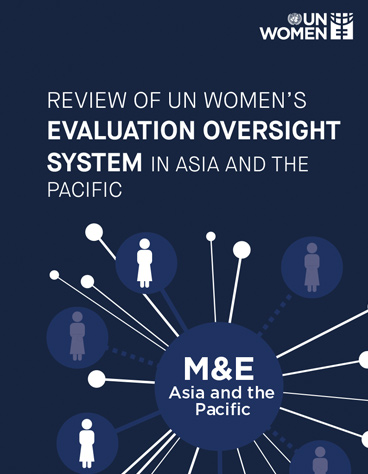
Review of UN Women's evaluation oversight system in Asia and the Pacific

The UN Women Evaluation Policy came into effect in January 2013 and a new Strategic Plan (2014-2017) was endorsed in September 2013. A landmark System-Wide Action Plan (UN-SWAP) on gender equality and women's empowerment was also adopted that requires annual reporting against a performance indicator on gender-responsive evaluation.
Given the decentralized nature of the organization, the majority of the evaluations supported by UN Women are managed at a decentralized level. On average, in Asia and the Pacific region, 20 evaluations are conducted by UN Women Offices each year. Therefore, UN Women Regional Office for Asia and the Pacific (ROAP) is giving increased emphasis to strengthening support for decentralized evaluations conducted by Multi-Country Offices (MCOs) and Country Offices (COs) in the region.
To address the organizational demands for enduring good quality and credible evaluations particularly at decentralized level, in December 2013, the UN Women’s Independent Evaluation Office (IEO) established a Global Evaluation Oversight System (GEOS). Based on eight key performance indicators, the purpose of GEOS is to provide transparent information on the performance of the evaluation function at corporate and decentralised levels. The system includes a dashboard that presents the key performance indicators for the evaluation function in a user-friendly manner.

